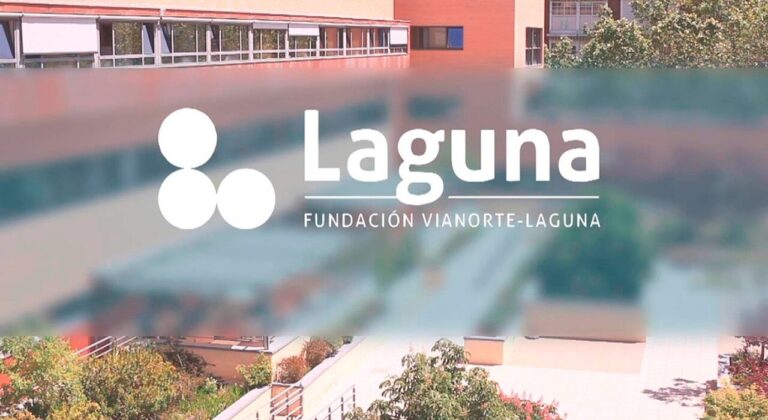Jessa Dillow Crisp (photo courtesy of herself)
The image of a porn actress smiling for the camera in a film on the genre may be the “definitive proof” that, if she’s involved in the industry, it’s on account of her own free will. Nothing eases the mind for those trying to ignore any red flags their consciences hold up than a smiling face of a young woman. It just must be “ethical porn,”; no doubt about it.
Behind the camera, however, there may be someone pointing a gun at the girl’s head, or a beating waiting for her if she doesn’t come across sufficiently “enthusiastic.” It has happened to young women (and men) in situations of vulnerability due to their poor family or economic circumstances. Or when seemingly respectable people attract them into the industry with false promises that they’ll be working as actors, models, etc. –people who sign “contracts” that force them to film highly sexually explicit content, which blends into pornography before their very eyes. Once “you’re locked in,” what’s a little more when it comes to X-rated content? What does it matter when lines which are clearly not included in your contract are crossed?

If the person refuses to cross lines which would lead to their further degradation, the “money” behind the project has more coercive methods for getting them to act. Jessa Dillow Crisp, a Canadian woman, experienced them firsthand, forced by her relatives to film videos of this nature since she was a minor. According to Dillow Crisp, who spoke with the anti-pornography organization Fight The New Drug for an article,”[I had] guns pointed at me and people telling me that if I didn’t keep doing what they told me to do that I would be shot. I was being raped, but I had a smile on my face. I had to act like I enjoyed it”.
If coercion or deceit, or a combination of the two, is involved in getting someone to act accordingly, their actions cannot be called a free choice, regardless of the Colgate smile an audience sees. They are victims of trafficking, treated as objects: goods to sell, usable, disposable “things”…
No, they don’t enjoy it, and it’s time “ethical” consumers of the content wake up.
Violence: A common theme
With the help of the person in charge of a shelter for victims of sexual trafficking, Jessa was able to escape from a trafficking and pornography ring in 2010, and has since settled in the U.S. She is an example of strength and resilience: Rather than isolate herself in her pain and remain quiet, she went to college, earned a Master’s in Mental Health, and founded an anti-trafficking NGO, BridgeHope, in Denver, Colorado. With her knowledge and training, she has provided training on the subject to officials from the U.S. State Department, Homeland Security and the U.S. Air Force.
The young woman, who agreed to answer several questions from Aceprensa, knows what she is talking about when she addresses the relationship between porn and trafficking.
— What is the typical profile of a person trafficked for the purpose of exploitation in the porn industry?
— It’s impossible to define a typical profile of a person trafficked for the purpose of exploitation in the porn industry, as the porn industry is dictated by the demand buyers. In other words, the areas that people are wanting pornography are going to the areas that traffickers will seek to produce pornography –creating victims in the wake of where people are willing to pay money–. Victims of pornography do not fit into a specific mold and can include children, teens, boys, girls, LGBTQ+ individuals, non-binary, queer, women, and men.
– Can you provide an approximate percentage of how many of those involved in pornographic videos are trafficked?
— It’s impossible for me to quantify the percentage of those being trafficked in pornography, but what I can say is that that all forms of child sexual abuse material is trafficking and data is indicating that the average age of a minor victim being filmed is 12.8 years old (Bouché, 2018), while a common term searched for porn is teen (Waugh, 2015).
Polaris (2020) indicates from the National Human Trafficking Hotline data they have collected that pornography is the third most common form of sex trafficking of adults and minors. Overall, as my friends at Fight the New Drug (2022) states, “if someone is tricked, manipulated, or coerced into the production of porn, that legally qualifies as sex trafficking. For example, if a porn performer shows up on set to discover that the scene is much more aggressive or degrading than they’d been told, and their agent threatens to cancel their other bookings if the performer doesn’t go through with it, that legally qualifies as sex trafficking” (para. 20), which basically means that sex trafficking within pornography is more common than what one could imagine.
“Even though some pornography is consensual, it’s impossible to know what is ‘ethical’ pornography and what is trafficking”
— If trafficking is common, then so is the accompanying violence….
— From my experience, physical violence was often used as a form of control to the point where I had experienced so much violence that eventually someone would say something or threaten me with an object to psychologically force me to do things that I would not have done out of freewill or choice. For instance, all that viewers could see is my smile, but I had guns pointing at me during the filming were not captured by the videographers.
— For the consumer, is there an effective way to identify that the person appearing on screen is a victim of sex trafficking or does he/she do these scenes with full responsibility and consent?
— There is no way to identify a person appearing on screen is there by choice or is a victim of trafficking, or being forced in what is viewed. Even though some pornography is consensual, it’s impossible to know what is “ethical” pornography and what is trafficking. Additionally, it needs to be noted that many people who choose to do porn as a profession are often raped, forced to do things that are not listed in their contracts, and experience extreme violence and trauma during filming. It’s an industry that perpetuates harm for the financial benefit of the producers.
When porn sets the bar
The violence in porn transcends, however, the set. If the consumer understands that the practices they see on the screen are perfectly replicable, the suffering and degradation will sink their teeth into even more people.

FTND emphasizes that traffickers and sexual abusers use these materials to groom their victims, reduce their inhibitions and desensitize them so that they “normalize” what, next, will happen to them (several members of the French Senate recently reported about this practice). The aforementioned website cites the testimony of Elizabeth Smart, a girl from Salt Lake City who in 2002, at the age of 14, was kidnapped for nine months.
According to Smart, her captor forced her to watch pornography before sexually assaulting her. “The things that these women were being photographed doing were things that I was being forced to do, and it was almost like they were setting the bar, setting the standard of what my captor was going to force me to do next… It almost felt like this pornography was my sentencing”.
A sentence that, in a different but equally negative way, also affects the viewer and the people they come across in real life. There are multiple studies on the subject. One recent study carried out by a British-American team examined the behaviors of 2,815 porn consumers from Germany, Taiwan, the U.S. and South Korea. The researchers found that viewing the content had a notable impact on the development of an attitude of “sexual objectification” towards others.
“While there is evidence that endorsing sexual objectification can lead to acceptance of violence against women –they wrote–, there are also data to suggest that it does not take extreme forms of sexual objectification (e.g., sexual assault) to negatively affect those targeted—even subtle day-to-day sexual objectification can impair the emotional well-being of those targeted”.
“Those images do not define me”
No one comes out of the porn swamp unscathed, especially the victims, whose recovery is arduous. Jessa, who as a mental health expert has spoken to hundreds of survivors, tells us about the difficult process: “Since the healing process is lifelong, finding resources like housing, medical care, mental health care, and scholarships for education is so hard and more services are needed to keep individuals from being re-exploited”.
But porn consumers don’t come out unaffected either. There are several consequences which come from watching the content, all of which are very interconnected.
“Pornography users often report negative thoughts about themselves and difficulties connecting sexually with their partner”
— How can the viewing of pornography affect pornography users in their personal lives and social relations?
— On a neurobiological level, when individuals seek sexual stimuli, they experience a surge of the feel-good neurotransmitter called dopamine creating a correlation between pornography and pleasure. Not only does dopamine play a role in the addictive qualities of pornography, but as a person continues to use pornography, they can grow a tolerance to it and what used to create the rush of dopamine in the past might require other forms and types of pornography to create similar feelings of pleasure—leading sometimes to the illicit use of child sexual abuse material and/or the purchase of people being trafficked in the commercial sex trade.
Pornography users report lower self-esteem, lower confidence, experiences of depression and anxiety, as well as negative cognitions. Furthermore, individuals who use pornography also report struggles in being sexually aroused by their partner, finding it easier to orgasm to self-stimulation versus working to co-create emotional and physical connection.
— Finally, for people forced to participate in porn videos, is it possible to overcome such unpleasant memories and prevent them from influencing their lives once they have been rescued?
— As both a mental health professional and a survivor of pornography, I believe it’s possible to heal and recover from the unpleasant memories of being exploited in pornography, but it’s also incredibly hard. Just like it is challenging to recover from a major surgery, recovering from the sexual, physical, and emotional wounds related to the exploitation that takes place within the production of pornography is extremely difficult and requires not only hard work and perseverance, but a dedicated team of trained professionals who are equipped to walk one through the process of recovery.
Personally, I have had to come to place of learning to live with the knowledge that my images of humiliation, rape, and sadistic pain are still being bought around the globe, which means that to this day I am still be trafficked and exploited through pornography. Yet, those images do not define who I am—because I am a survivor, author, speaker, poet, wife, mental health professional, and PhD student!
